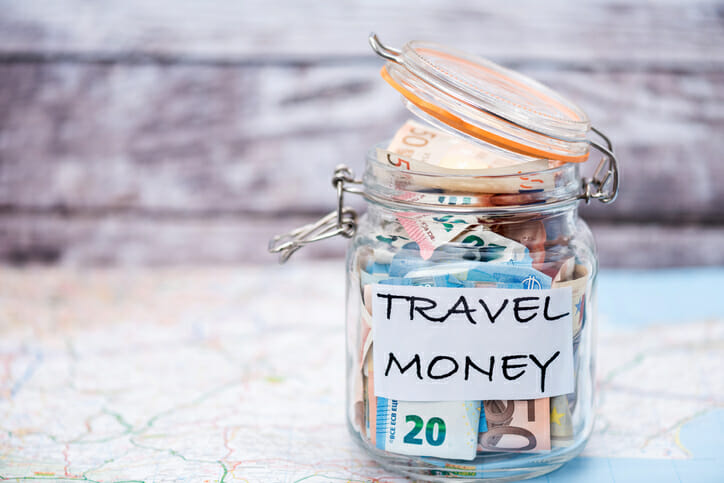
Vacations can put a dent in your family’s budget. Between airfare, accommodations, activities, food and souvenirs, the costs really add up. Rather than go into debt to pay for the trip, a better approach is to create a vacation savings account to set money aside and earn interest for your next trip. Here’s how it works and some account options you can use.
A financial advisor can help you create a financial plan for your savings needs and goals.
What Is a Vacation Savings Account?
A vacation savings account is a dedicated account where investors save money for a trip. These accounts can be created with a specific trip in mind where you already have the costs identified and planned out. Or, they can be a general vacation savings account that proactively sets aside money for a future vacation.
Many banks now let customers create multiple savings accounts without requiring a minimum opening deposit or charging monthly fees. This enables savers to open different accounts for specific goals, like a vacation or home improvement project, or for annual bills where you can deposit money on a regular basis throughout the year.
Why a Vacation Savings Account Is a Good Idea
A vacation savings account is a good idea because it allows you to set aside money for your vacation without commingling it with your other accounts. If your vacation money stays in your checking or general savings account, the money could be spent on other bills by accident.
Having a separate vacation savings account also makes it easier to track your progress towards your goal. Many families budget the expected cost of a trip ahead of time. When you know the costs of the trip, you can plan ahead. Common expenses while on vacation include:
- Transportation to the destination (airfare, train, cruise, gas for car)
- Accommodations (hotel, Airbnb, timeshare)
- Meals
- Entertainment (theme parks, ski lift tickets, local attractions, shows, sports)
- Souvenirs
Saving for the vacation ahead of time also avoids going into debt. If you don’t have money saved for the trip, most travelers use a credit card to pay for expenses. With the typical credit card charging 15% to 20% annual interest, your vacation could cost a lot more if you carry a balance and pay it off over time.
Vacation Savings Account Options

To put aside money for your next vacation, consider opening a vacation savings account with one of these seven options. Some of them are bank accounts, while others are offered by investment, insurance, or other financial services companies.
Regular savings account. Traditional banks and credit unions offer savings accounts to customers. Generally, these accounts do not pay a high interest rate, but the money is FDIC insured and easy to access at a local branch, online, or through a mobile app. Many savers open one of these accounts and the bank where their checking account is so that they can easily be linked to make transfers.
High-yield savings account or money market account. High-yield savings accounts or money market accounts offer a higher rate of interest than traditional savings accounts from a brick & mortar bank. These accounts are typically offered by online-only banks that have less overhead expenses because they don’t have physical branches. In some cases, you may need to maintain higher balances in order to receive the best interest rates. You can link your existing checking accounts to these online banks, but it may take two to three days for the money to transfer between accounts.
High-yield checking account. Some checking accounts offer high interest rates like a savings or money market account. High-yield checking accounts are usually offered by online-only banks. And some may require larger balances to open an account, receive the best interest rates, or avoid monthly service charges. Although they are checking accounts, you can still use them to save money for your vacation. And as a bonus, you can pay for travel expenses directly out of these accounts by writing a check or using a debit card.
Short-term CDs. When you won’t be using the money for a longer period of time, you may be able to receive a higher interest rate by buying a short-term certificate of deposit (CD). Not only do these accounts offer higher interest rates than traditional savings accounts, but they also lock up your money through the maturity date. This makes it harder to spend the money frivolously on other expenses besides your goals.
Short-term government bonds. Savers can buy short-term government bonds through their brokerage account or directly from the U.S. Treasury. These bonds offer a guaranteed interest rate. And while their value may fluctuate on a daily basis, their short-term nature minimizes the volatility. If you hold them to maturity, you will receive 100% of the bond’s face value.
Money market fund. A money market mutual fund or ETF acts like a bank money market account. However, these accounts are not FDIC insured. Instead, they are insured by the SIPC, which is the investment company version that backs up investors’ accounts in case the company goes out of business. These accounts offer a higher interest rate than a traditional savings account and generally do not have any monthly fees. Some investment companies may require a minimum balance in order to open an account.
Brokered CD. A brokered certificate of deposit (CD) is similar to a bank CD, but they are offered through a brokerage instead of your bank. Some brokered CDs charge a small commission when you buy or sell, so keep that in mind when comparing options. If you need to access your money before the CD matures, you’ll sell it like a stock or bond. This means that you may receive a different value than what you bought it for or its face value. However, if you hold it to maturity, you’ll receive its full value. Additionally, many brokered CDs have a minimum investment of $1,000, and they may not offer FDIC insurance protection.
Bottom Line

If you’re planning a vacation, it pays to open a vacation savings account to pay for the trip. This enables you to contribute to the account throughout the year and avoid going into debt to cover the expenses. There are many options where you can save money besides a traditional savings account at your local bank. Discuss the options with your financial advisor to determine which approach is best for your situation.
Tips to Earn More Interest on Your Money
- A financial advisor can help you find the best interest rates and terms for your vacation savings account. SmartAsset’s free tool matches you with up to three financial advisors who serve your area, and you can interview your advisor matches at no cost to decide which one is right for you. If you’re ready to find an advisor who can help you achieve your financial goals, get started now.
- Finding an account with a higher interest rate can help you reach your goals faster. Our savings calculator projects how much your account will grow based on your current balance, ongoing contributions, and interest rate.
Photo credit: ©iStock.com/Kostikova, ©iStock.com/CentralITAlliance, ©iStock.com/clubfoto